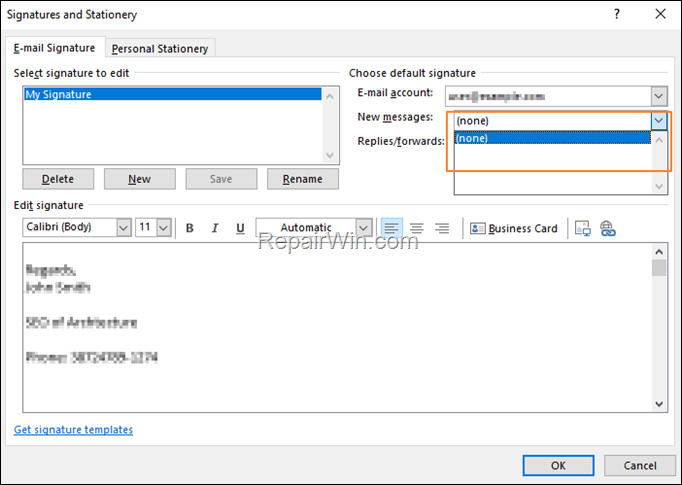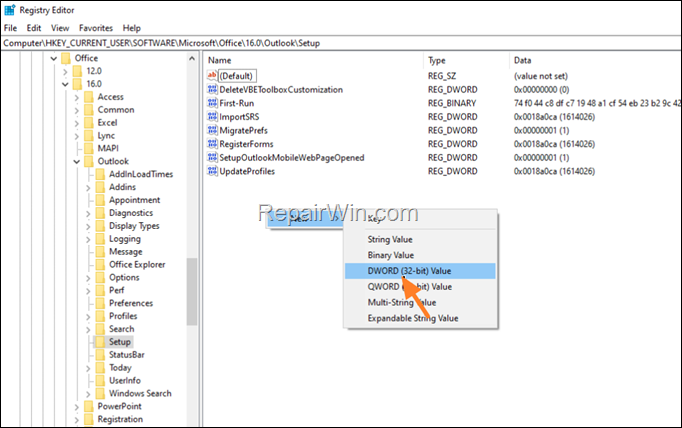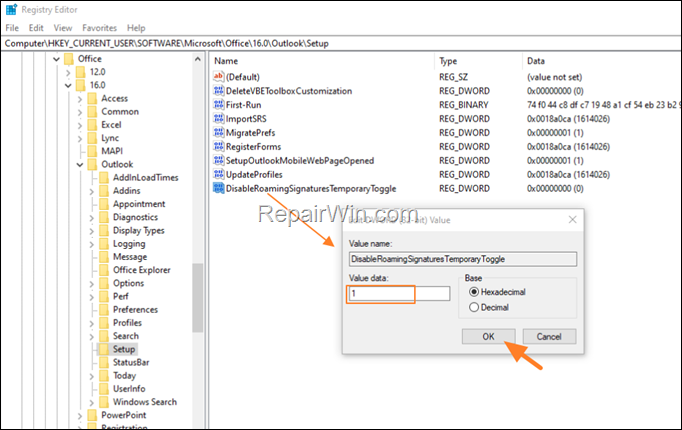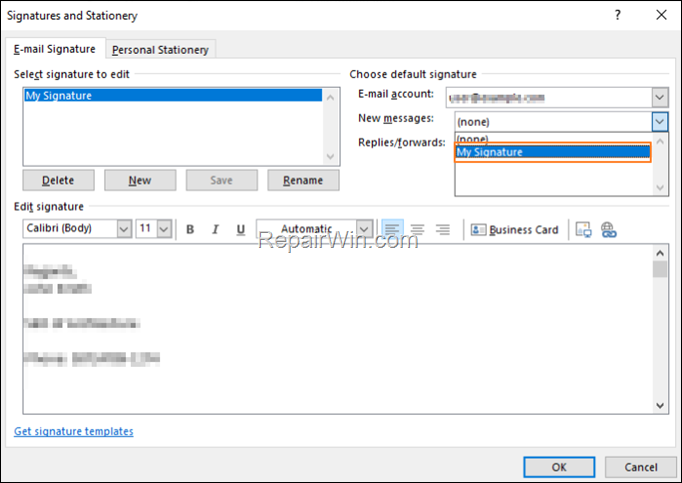If you can’t choose a default signature for “new messages” and “replies/forwards” in Microsoft Outlook, because the list of signatures is empty, continue reading below to fix the problem.
Problems that fixed with this guide:
- After creating an email signature Outlook 365, the signature cannot be set as the default signature for new and reply messages, because it does not appear in the list of available signatures.
- After Updating Office, all Outlook Signatures are gone and users cannot choose a default signature for new and replies messages.


The reported issues occurs in Outlook for Office 365/Microsoft 365 due to “Outlook Roaming Signatures” feature. More specifically:
Until today, if you wanted to have the same signature on one or more computers, you had to create the signature on each computer separately. This was because the signature was stored locally on each computer (inside the “C:Users<Username>AppDataRoamingMicrosoftSignatures” folder), and not in user’s mailbox.
Today, with ‘Roaming Signatures’, which is – for now – available to users with mailboxes in Microsoft 365 or Outlook.com, signatures are stored in the user’s mailbox in the cloud (rather than locally), and will be available to all the devices where this user account is set up.
* Note: Accounts hosted on Exchange on-premises servers, or POP/IMAP accounts will not be able to roam their signatures at this time.
To be able to view and select a default signature for new and replies messages from the locally stored signatures after updating Office, you have to disable the “Roaming Signatures”, using the steps below.
How to Disable the Roaming Signatures feature in Microsoft Outlook.
To force Outlook to show the locally saved signatures, proceed and disable the “Outlook Roaming Signatures” feature, in Registry:
1. Open Registry Editor. To do that:
1. Press Windows
+ R keys to open the run command box.
2. Type regedit and press Enter.
2. In Registry Editor, navigate to the following location:
- HKEY_CURRENT_USERSOFTWAREMicrosoftOffice16.0OutlookSetup
3. Right-click on an empty space on the right-pane and select New > DWORD (32-bit) Value.


4. Name the new value as: DisableRoamingSignaturesTemporaryToggle and press Enter.
5. Double-click to open the new value and set the Value data to 1. When done, click OK.


6. Restart Outlook and you should be able to select the Default signature for your emails

 .
.
That’s all folks! Please leave a comment in the comment section below or even better: like and share this blog post in the social networks to help spread the word about this solution.




